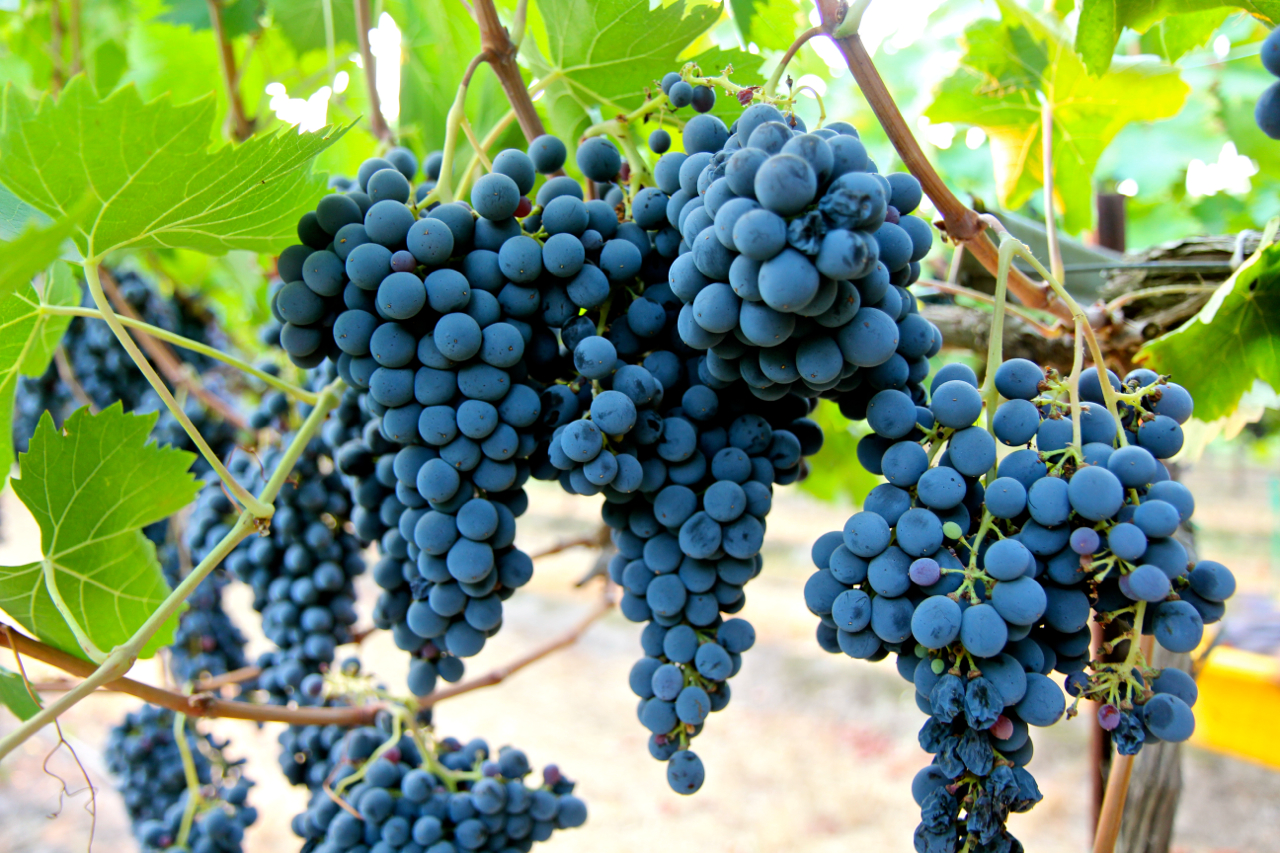SANGIOVESE VINE
The history of this grape is worthy of a detective novel of yesteryear. How could it have been otherwise as it is one of Italy’s most important vines. The origin of the name might appear quite ancient: “Sanguis Jovis”, that is the blood of Jupiter from which apparently derives the modern term Sangiovese, even though the first mention of this vine has it as Sangioveto. Its adopted area and the one which has made it famous throughout the world is Tuscany, but its roots lie in the area of the Apennines between Umbria, Marche, Romagna and Tuscany where there are many varieties of this grape. The first mention we have of this vine dates back to 1500 and after a heated debate that lasted centuries on WHO and WHERE can lay claim to its true origin, Italy’s Istituto Sperimentale della Viticoltura of Conegliano decided to cast some light on the over 50 names that this vine has. It is quite correct to divide the vine into two groups: Sangiovese PICCOLO, which is widely grown in Tuscany and the parent of wines known as Chianti and Morellino Di Scansano, and Sangiovese GROSSO, the finest example of which in Tuscany is Brunello di Montalcino, but is more widely grown in other regions. Then there are the two oddities: one a Sangiovese Prugnolo cultivated in Montepulciano in the province of Siena belonging to the GROSSO group still designated as an independent vine; the other the Nielluccio which is cultivated in Corsica, which got there who knows how.
SANGIOVESE WINE
Defining a common character for Sangiovese Wine is not easy given the different expressions it manages to produce. If vinified in steel, a fresh, young wine emerges, which has an intense but not full colour, a floral slightly fruity scent with the typical fragrance of cherry, a light body, which is dry with good acidity. If aged for several years in oak barrels (Barrique or Tonneau) its character takes on a certain softness, it becomes robust, harmonious while still managing to hold on to the typical astringency of tannin. Sangiovese is one of those varieties suitable for single-varietal vinification and blend with other varieties.


